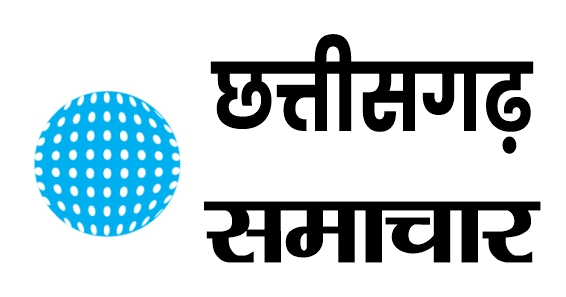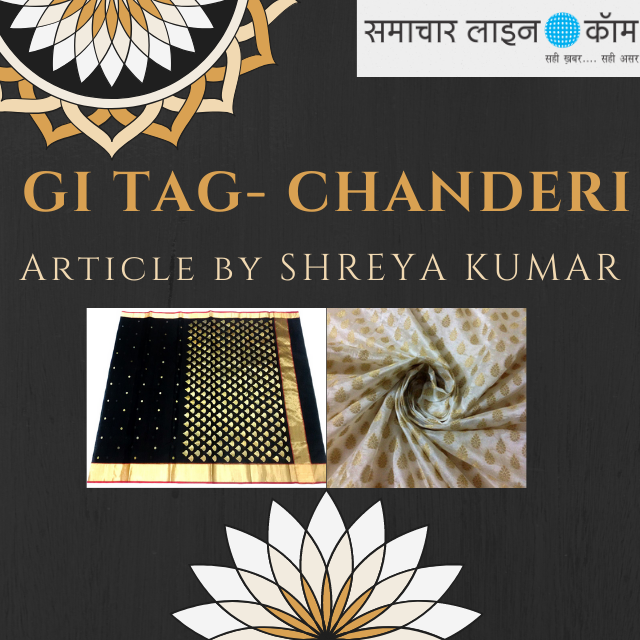Eleven years ago, Tahir Mujabar, a handloom weaver in the historical town of Chanderi was struggling to make ends meet for his family. With his wife Afroza and four children to feed, he was concerned about their future. Fast forward to 2017, and the same man says “I have got both of my daughters married without having to take any loan for their wedding. It was their own money. I am very proud of my daughters and my wife. My son does not want to migrate to the city to do labour work. He wants to stay here and help me with this business.”
The above statement goes on to show that if the indigenous, local products of the country are commercialized, publicized properly they can create ripples in the global market, empowering the local economy as well as the community beginning from the grassroot level. This article attempts to highlight local home grown products of India like the Chanderi Fabric, which was awarded the Geographical Indication Tag from the Government of India, in 2005 and how the entire community has successfully utilized this legal protection and has led to the creation of an effective market for the fabric, which has benefitted the weavers of this region enormously.
ABOUT CHANDERI
For the uninitiated, Chanderi is a small situated along the Betwa river, nestled between the historical city of Malwa and Bundelkhand in Madhya Pradesh. The 2018 Bollywood blockbuster, Stree was also filmed in this town. However, this popular town’s claim to fame is its traditional ethnic fabric- the Chanderi Fabric which is lightweight, sheer and has a fine luxurious feel to it. Chanderi has one of the most renowned handloom clusters of the country, famous for its centuries-old weaving speciality of finely textured fabrics of silk and cotton embellished with zari-woven work. According to local estimates, the town has population of about 30,000 of which 10,000 to 12,000 are involved in weaving of Chanderi sarees/ fabrics. For more than 60% of the population, weaving is the primary source of income in this town. About 25% of the weavers here are women and the numbers seem to be growing by the day.
CHANDERI SAREE- WORN BY ROYALTY, ACTRESSES; GLOSSY AND LIVELY
Chanderi saree are embellished with gold zari border and motifs which makes it look attractive as well as elegant. These sarees have been a favourite amongst the royalty since ancient times, and is an emerging fashion trend in the modern era with actresses like Vidya Balan and Kareena Kapoor sporting them. The distinctiveness of the fabric lies in its beautiful motifs. Traditionally, the motifs were inspired from floral, coins, fruits, peacocks, heavenly bodies but now motifs can be found in geometric abstract forms. These motifs are hand woven intricately on Chanderi fabric, thereby preserving the heirloom, traditional style of weaving, paying close attention to each and every detail with the resultant product looking exquisite and lavish. Vibrant hues of this fabric as well as the glorious pastel shades add a sense of freshness and liveliness to the outfit, making it perfect for the ideal summer wear. The fabric also has a glossy, lightweight feel to it making it even more enticing for its consumers. Items like dupattas, dress material, home furnishing etc. are also becoming increasingly popular.
HISTORY AND ORIGIN OF THE FABRIC
The Chanderi Fabric was first woven in a small town going by the same name, located near the Vindhyachal mountain ranges. According to mythological folklores, this fabric was first introduced by Shishupal- Lord Krishna’s cousin in the Vedic era. Historically speaking, the fabric traces its origin to 1305 AD when 20,000 people migrated from Lakhnoti, now in Bangladesh, and started producing fine muslins which were very soft, light weight and transparent. Soon, it became the favourite fabric amongst ancient kings and queens and Chanderi sarees were considered as a symbol of royalty. References to the fabric can be found in the Aurangzeb’s annal, Masir-i-Alamgiri, wherein it is stated that the Mughal Emperor ordered the use of a cloth embroidered with gold and silver for making khilat (a ceremonial robe or other gift given to someone by a superior as a mark of honour).At the beginning of 19th century, less availability of hand spun cotton made the weavers switch to mill made cotton. In 1910, the royal family of Scindia brought Chanderi saris under their patronage and during this time gold motifs were first embellished on the fine muslin sarees, which made it quite a valuable saree amongst the royal queens.
PROBLEMS IN THE INITIAL DAYS
Chanderi products face severe negative competition from power loom products made in Surat and Varanasi, which come at cheaper rates. For the ordinary eye, it becomes quite difficult to distinguish genuine Chanderi from non- Chanderi ones. Decline in demand has led to a consequential loss of jobs and income. The traditional handloom industry didn’t seem like a lucrative option to the youngsters; as a result of which they would move out of Chanderi production, thus posing a serious threat to the continuance of the ancient art and trade in Chanderi saree. In trade, the rich traders would control the supply of raw materials, resources and marketing channels. The small weavers continued to remain poor and ill-paid, surviving at a subsistence in spite their high-level artisan skills. There was a lack of formal organization amongst the weavers which made them quite vulnerable. There was no weavers body representing their interests, as a result of which the weavers had to turn to the big traders and weavers for a loan, which would inevitably result in their exploitation. Furthermore, the small weavers had little or no access to public services, such as social security, education and healthcare.
THE SOLUTION- SOCIAL UPLIFTMENT
Against this background, in 2003, the United Nations Industrial Development Organization (UNIDO), in collaboration with the state government of Madhya Pradesh, launched a three-year-long Cluster Development Programme in Chanderi with poverty alleviation as the prime objective. The main objective was to promote social justice, tackling the social imbalances by uplifting the weavers from the grassroot level. A strategy was designed to empower the weavers economically and socially by organizing them into a collective, which was owned and controlled by them in order to give them a voice to channel their demands formally. Thus the formation of self help groups played a major role in business exposure, formal organization, social empowerment as well as empowering women weavers.
GRANTING OF THE GEOGRAPHICAL INDICATION TAG
The Chanderi Development Foundation (CDF) was created as the overall representative body for the whole Chanderi cluster comprising of weavers, women weavers as well as master weavers. It provided a platform for the overall development of the cluster. Through the collective efforts of the organization, Chanderi was awarded the GI Tag in 2005. The tag was effectively used as a marketing tool, which would garner a high reputation for the product. Granting of the GI Tag also meant adhering to high quality standards. The Government of India has also petitioned the World Trade Organization for the recognition of Chanderi as a GI product at the international level too.
SUCCESSFUL MARKETING
- GI Tag awareness
A GI logo was prepared, and labels with the GI tag were distributed amongst the weavers and they were encouraged to use this logo in their bills, letterheads etc. Retailers and consumers were sent letters informing them of the authenticity of the Chanderi GI Tag. Financial support was provided to the Chanderi weavers, sensitization GI workshops were conducted and the weavers were sent to various exhbhitions ro increased their exposure.
- Online marketing
One of the major factors which distinguishes the Chanderi GI tagged product from other GI Tagged products in the country and makes it a success; is that in keeping up with the times an e-commerce website was established for Chanderi sarees where the products were directly sold online. Utilizing social media to their advantage, Facebook and Twitter pages were started for the Chanderi Sarees were started.
- Rural Tourism
Pranpur, located 3 kms from Chanderi, was one of the 36 villages selected by the Ministry of Tourism and UNDP’s Endogenous Tourism Project for promotion of rural tourism under the 10th Five-year plan. In 2009, Pranpur won the National award for rural tourism. (Outlook Traveller June 2012). Thus, in a tie-up with the Pranpur Rural tourism, Chanderi fabrics, curtains are shown to the tourists, who can visit the weaver’s settlement too and get an idea on how these products are made.
A BOLLYWOOD TOUCH
Marketing campaigns become a grand success, once they get a touch from Bollywood superstars and the same holds true for Chanderi. To promote their movie, ‘3 Idiots’, Bollywood actors Aamir Khan and Kareena Kapoor visited Chanderi and in an interaction with weavers, Kareen Kapoor was gifted a black Chanderi saree, with gold motifs. She was photographed by the media wearing this saree, and this resulted in a widespread endorsement
of the product. The sales of the saree skyrocketed, and this indirect celebrity endorsement was just the Midas Touch required. Many fashion designers like Anju Modi and Rohit Bal have used this fabric for their designing and brands like Raw Mango, Fabindia have a tie up with the Chanderi weavers, thereby actively promoting their products amongst the urban consuers. A host of Bollywood actors, including the likes of Anushka Sharma, Vidya Balan, Kangana Ranaut, Aditi Rao Hydari, Sridevi have worn the Chanderi Saree and are spotted for social events thus resulting in widespread publicity for the product.
CHANDERI – A GRAND SUCCESS STORY
Chanderi fabric, is that rare GI tagged product in India, which has achieved success commercially as well as socially. The GI Tag was effectively utilized for formalization of trade, and various mediums of marketing were effectively exploited ranging from online e-commerce sites, to rural tourism and celebrity endorsement. While in most cases, the enthusiasm dies down once a product gets the GI Tag in India, the case is not so with the Chanderi Saree. Rather, the entire community of weavers became pro-active after the GI Certification resulting in widespread success for the entire community. In the Commonwealth Games held in India in 2010, medal winners were bestowed with Chanderi ‘angvastram’, and further many players were given Chanderi stoles, thus amounting the orders to Rs 50 lakh. Not only did this bring monetary profits to the weavers, but also earned them a high repute and prestige, globally. Through the profits earned, the handlooms in Chanderi were upgraded, their working was digitised, they’ve collaborated with major institutions of the country like National Institute of Design, National Institute of Fashion Technology, Indian Institute of Technology etc. Not only at the commercial scale, but at the social level too things have changed for the better, with a large number of children being sent to school, improved sanitation facilities and higher standards of living.
Thus, the story of Chanderi fabric goes on to prove that the traditional artisans, craftsmen and farmers of the country have all the resources as well as talent to establish a successful market. All they need is skilled training and a formal recourse to channelize their local resources to new business opportunities.
Shreya Kumar @ Samacharline









